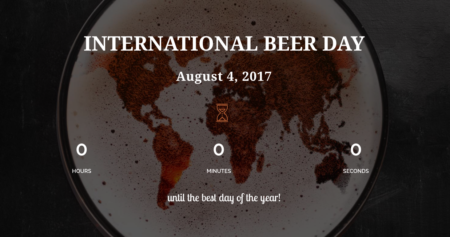- Sustainability assessment of agricultural systems: The validity of expert opinion and robustness of a multi-criteria analysis. Experts know their stuff.
- Genetic diversity of Patellifolia patellaris from the Iberian Peninsula, a crop wild relative of cultivated beets. 271 individuals, 10 sites, maybe 3 genetic groupings?
- Production system and participatory identification of breeding objective traits for indigenous goat breeds of Uganda. Resistance to biotic and abiotic stresses are the priority.
- Plant diversity for sarma in Turkey: nature, garden and traditional cuisine in the modernity. 73, including 3 endemics.
- Identification of ecogeographical gaps in the Spanish Aegilops collections with potential tolerance to drought and salinity. Evaluation avant la lettre.
- Trends and drivers of on-farm conservation of the root legume ahipa (Pachyrhizus ahipa) in Bolivia over the period 1994/96–2012. Price is too low.
- The Vulnerability of Plant Genetic Resources Conserved Ex Situ. The problem: “…genebanks around the world are generally under stress, largely from inadequate public investment, weakened political support, and insufficient stakeholder engagement.” The solution: privatization, commodification, consolidation, prioritization, communication.
- Species composition and environmental adaptation of indigenous Chinese cattle. Taurine-indicine cline N-S, with traces of banteng, gayal and yak.
- Climate change and crop diversity: farmers’ perceptions and adaptation on the Bolivian Altiplano. Maintaining multiple varieties still done, despite not seen as climate adaptation.
- A Risk Assessment Framework for Seed Degeneration: Informing an Integrated Seed Health Strategy for Vegetatively Propagated Crops. Actually not seed, but rather what to do about pathogen build-up in vegetative planting material. Turns out farmers can be quite good at producing clean material if they can choose healthy plants.
- New criteria for the molecular identification of cereal grains associated with archaeological artefacts. Alkylresorcinols, basically.
Composite provenancing for crops too?
I completely missed an interesting blog post by Prof. Andy Lowe of the University of Adelaide when it came out a couple of years ago. “Local is not always best” updates a paper in a previous article 1 on where you should get your seeds from for habitat restoration projects. In summary, the answer is: not all from one, nearby place.
To simulate the natural mixing of genes during a restoration programme, it would be necessary to restore populations using a mixture of material sampled at different distances from the focal site, a practise defined as composite provenancing. This ‘composite provenance’ would be predominantly composed of locally sourced material, taken from genetically healthy stock, but would also incorporate local and ecogeographically matched sources. In addition, a smaller proportion of material, depending on the natural gene flow dynamics of the focal species (but usually somewhere between 10 and 30%), should be comprised of material from much further a field.
Though Prof. Lowe deals with wild species in his paper and blog post, I think “composite provenancing” is also be relevant for crops. Sometimes, too much is made of “genetic integrity” and localism.
Low throughput phenotyping
A new breeding selection criterion for me: football bounce in turf breeding programme, Nanjing Inst Botany, Jiangsu https://t.co/1TDdXekCWo
— Pat Heslop-Harrison (@Pathh1) August 7, 2017
The first national botanical garden in China, apparently.
Brainfood: Mycorrhizal diversity, Olive diversity, Teak diversity, Core software diversity, Cost-benefit, Frosty rye, CGIAR future, Portuguese beans, Improvement networks, Food sovereignty
- Historical biome distribution and recent human disturbance shape the diversity of arbuscular mycorrhizal fungi. Proximity to tropical grasslands during the last glacial maximum makes for a large potential species pool, remoteness from human disturbance for the presence of a high percentage of that pool.
- The First Molecular Identification of an Olive Collection Applying Standard Simple Sequence Repeats and Novel Expressed Sequence Tag Markers. 59 genotypes among 370 trees.
- Worldwide translocation of teak—origin of landraces and present genetic base. The dryer part of the natural range has not really been used in plantations.
- GenoCore: A simple and fast algorithm for core subset selection from large genotype datasets. Better than MSTRAT, Core Hunter, and random sampling.
- Global economic trade-offs between wild nature and tropical agriculture. We can go ahead and cut down the Atlantic Forest. Wait, what?
- Exploring new alleles for frost tolerance in winter rye. Basically one allele, actually.
- Reforming the research policy and impact culture in the CGIAR: Integrating science and systemic capacity development. Let CGIAR be CGIAR.
- Improving global integration of crop research. Taking this to the next level. Which sounded a lot like the International Treaty’s Global Information System on PGRFA. Also, see above.
- Establishing the Bases for Introducing the Unexplored Portuguese Common Bean Germplasm into the Breeding World. 37 accessions had 100% of the diversity of 175 accessions, which were mainly hybrids between the two main genepools. I don’t think I’ve ever seen that before.
- Plant diversity increases with the strength of negative density dependence at the global scale. Janzen-Connell were right, it’s natural enemies that explain the tropical-temperate diversity pattern. With video goodness.
- Local food sovereignty for global food security? Highlighting interplay challenges. “…scaling up of food sovereignty will not necessarily lead to wider sustainability and food security outcomes.”
